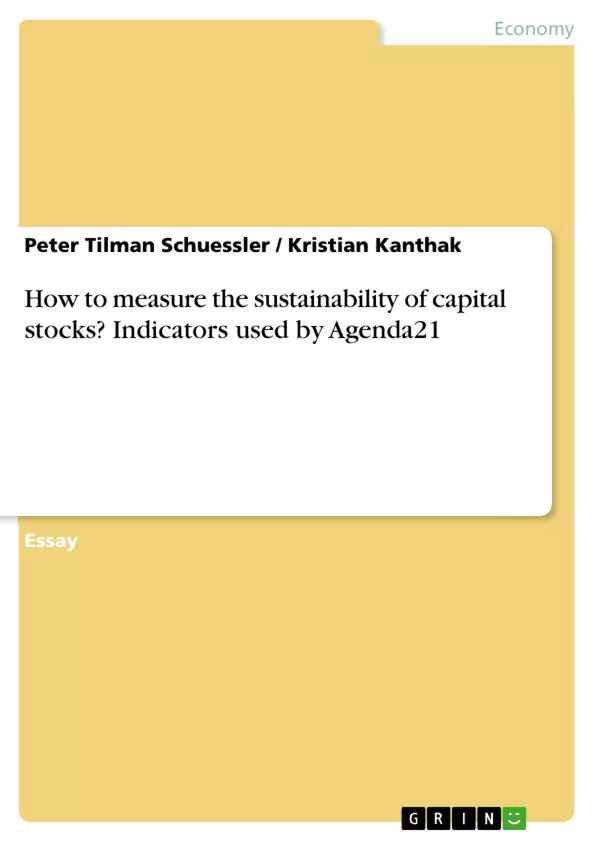We have to look back to the year 750 AD, the end of the Omayyad Caliphs 1, to see the "Islamic world" acting as an united power. The probability of an emergence of a pan-Islamic foreign policy is to be discussed in this essay, which means a foreign policy that involves all Muslim countries and allows them to speak with one voice. Joint policy aims can only be formulated when the interests differ just slightly. The Islamic countries however have few common goals. Firstly this essay will discuss economic, and secondly political and cultural factors. Thirdly the structure of the states will be considered, and finally religious influences will be evaluated. It will be shown that obstacles impeding a collective foreign policy outweigh the driving forces in its favour by far.
Economic issues regularly have a strong impact on foreign policy strategies. The interlinkages between the areas of politics and economics are often so complex, that even one major common aim of two states might not be enough to produce a consensus between them on one policy programme. There might be joint interests like issues concerning oil if we talk about Indonesia and Kuwait, for instance. The differences in their goals, however, are too great to bring them together. Kuwait is rich and tries to retain its wealth, while Indonesia struggles with economic difficulties, inflation and local uprisings. The archipelago depends on the support of the world bank while the Kuwaitis do not know any problems of that kind. Nevertheless there are attempts to combine several nations′ economic interests with one another. OPEC, while not all of its member have an Islamic population (although its most influential and powerful ones do), is a fine example of how international co-operation might work. All participants of that organisation produce oil, and they founded this alliance to raise the world oil price by organised behaviour 2. History shows that this was quite effective in the beginning. Yet this is not enough to be optimistic to create promising prospects for a pan-Islamic co-operation. Since Venezuela has a Christian population, not all OPEC states are Islamic; the organisation can therefore not be seen as a fine prototype for a purely Muslim alliance. Additionally the development of OPEC continued less successfully - in terms of forming a combined foreign policy strategy - than it began. The partnership was solely focused on oil and did not include other economic or political topics.
Inhaltsverzeichnis (Table of Contents)
- Introduction
- Relevant Definitions:
- Sustainability
- Capital Stocks
- Agenda 21
- Indicators...
- Capital Stocks according to the CSD proposal (Agenda 21).
- Indicators within the four categories
- General part...
- Social category..
- Economic category
- Environmental category.
- Institutional category
- Conclusion............
Zielsetzung und Themenschwerpunkte (Objectives and Key Themes)
This essay aims to explore the attempt to measure sustainability using the theoretical model of a capital stock. It specifically analyzes the list of indicators proposed by the Commission on Sustainable Development (CSD) in response to the Agenda 21, a program of action for sustainable development worldwide. The paper focuses on a select few indicators to demonstrate the strengths and weaknesses of the CSD’s proposed list.
- Defining sustainability in relation to capital stocks
- Analyzing the various types of capital stocks: natural, man-made, human, and social
- Examining the Agenda 21 and its focus on developing indicators for sustainable development
- Exploring the strengths and limitations of the CSD's proposed indicators
- Highlighting the need for a comprehensive and harmonized approach to sustainability indicators
Zusammenfassung der Kapitel (Chapter Summaries)
- Introduction: The introduction provides context for the essay, explaining its focus on measuring sustainability using the capital stock model and the CSD's role in developing a set of indicators in response to the Agenda 21.
- Relevant Definitions: This section defines key concepts like sustainability and capital stocks. It describes sustainability using the Brundtland Commission's definition and outlines the different types of capital stocks: natural, man-made, human, and social.
- Agenda 21: This chapter explores the background and objectives of Agenda 21, a UN initiative aimed at promoting sustainable development worldwide. It highlights the importance of developing indicators to measure progress towards sustainability.
- Indicators...: This section delves into the need for a comprehensive set of indicators beyond traditional measures like GNP. It emphasizes the importance of considering social, economic, environmental, and institutional factors in the assessment of sustainability.
- Capital Stocks according to the CSD proposal (Agenda 21): This chapter presents the CSD's proposed framework for measuring sustainability using capital stocks, encompassing four categories: general, social, economic, environmental, and institutional. It lays out the rationale behind each category and its importance in understanding sustainability.
- Indicators within the four categories: This section examines specific indicators within each of the four categories proposed by the CSD. It focuses on a select few to illustrate the strengths and weaknesses of the proposed list.
Schlüsselwörter (Keywords)
This paper focuses on key concepts related to sustainability measurement, including capital stocks, indicators, Agenda 21, the Commission on Sustainable Development (CSD), and the framework for measuring sustainability through four categories: general, social, economic, environmental, and institutional. It examines the strengths and weaknesses of the proposed indicators and highlights the need for a comprehensive and harmonized approach to measuring sustainability.
- Citar trabajo
- Peter Tilman Schuessler (Autor), Kristian Kanthak (Autor), 2002, How to measure the sustainability of capital stocks? Indicators used by Agenda21, Múnich, GRIN Verlag, https://www.grin.com/document/8915



